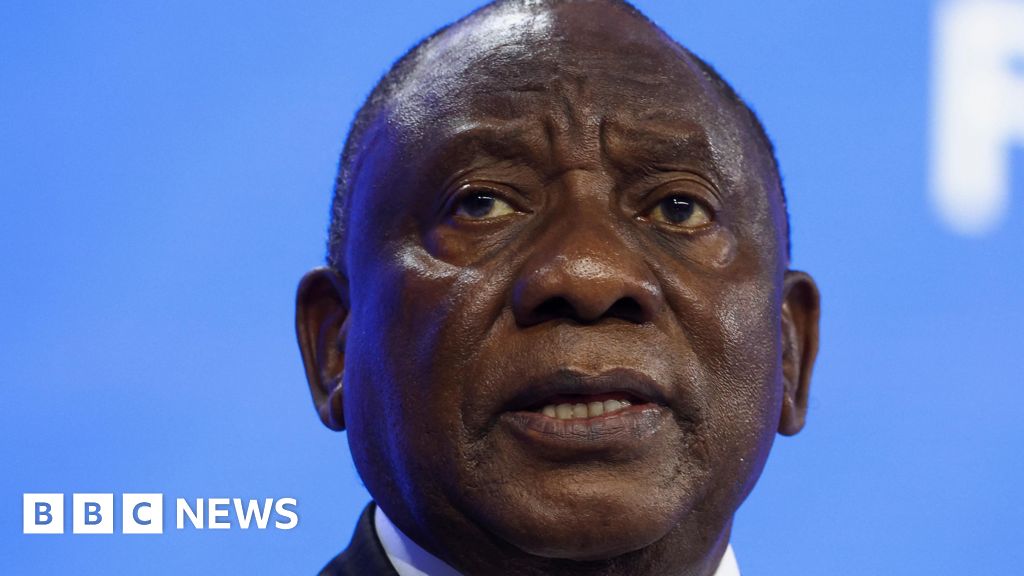‘My crew are my brothers’: Inside Tunisia’s dance revolution | Arts and Culture
Tunis, Tunisia – It is a balmy Thursday night in Tunis and the region’s coolest crowd is escaping the city centre. Headed north towards the nightlife district of Gammarth, these in-the-know trailblazers are leading Tunisia’s burgeoning cultural renaissance.
Tonight, the focus is a highly anticipated competition, a “breakdance battle”.
The venue, Lazy Club Tunis, is charmingly shabby – beer bottles propped up against walls and broken nightclub paraphernalia stacked up in corners; cracked chairs, shattered crates, a microphone discarded upon a table.
By the time we reach the dance floor, compact groups have already started to form. Onlookers are jostling on the sidelines, the beat swelling as the crowd tightens around a central point of focus.
With my view partially obstructed, all I can see is the occasional arched trainer or protruding hand rising above bopping heads. These limbs quickly disappear again, cheers applauding their quick movements. As I weave my way towards the front of the pack, I begin to understand why the audience is so enraptured.
A single dancer is currently occupying the man-made stage in the middle of the crowd. He has just launched into a sequence of convoluted moves involving rapid footwork and acrobatic backflips. Energised onlookers gradually inch closer to him. It isn’t long before another dancer emerges from the fray, circling inside the crowd to widen the space again and hyping himself up.
The performer is 25-year-old Oussema Khlifi, who recently graduated from the Higher Institute of Technological Studies (ISET), Rades University in Tunis with a civil engineering degree. Despite his academic credentials, Khlifi has decided to put all that aside and pursue a creative career in breakdancing instead.
Role models and a revolution
We meet a couple of days later at a bohemian cafe in La Marsa. An upmarket neighbourhood, La Marsa has a distinctly bourgeois atmosphere; pressed linens and straw hats adorn the mannequins in boutique shops nearby. Fresh-faced Khlifi stands out from the crowd, his baggy jeans and bucket hat swaying as he walks towards me with a weightless gait.
His friend, hip-hop and contemporary dancer Hazem Chebbi, arrives a little bit later. Slightly more reserved, 29-year-old Chebbi sports a buzzcut and a thick moustache. His slim build lends itself to an effortless agility, each movement, when he dances, delicate yet pronounced – a skill that has earned him a place as a regular performer at the Opera Theatre in Tunis.
Chebbi begins our conversation by telling me how he grew up in Tozeur, a city in southwest Tunisia. “It was a lot more rural compared to Tunis, there were no cultural or dance initiatives there.”
Slightly abashed, Chebbi confesses: “I only started dancing after I watched the film, Step Up.”
The American film charts the love story of a disadvantaged street dancer and privileged modern dancer. “It was around 2010, and none of my friends thought it was cool.” Chebbi laughs as he tells me: “I would just rehearse the dance scenes from the film in my bedroom mirror by myself, then I started finding videos on YouTube to copy, too.”
Khlifi tells a similar story. “I stumbled across clips of people breakdancing on YouTube and became immediately obsessed. I did not know anyone else who liked breakdance or earned a living from it in Tunisia, so it felt pretty futile at the time.”
Things changed for Khlifi when he delved further and discovered old videos of Tunisian breakdancers from the 1990s.
“I saw a clip from 1996 of Seifeddine Mannai breakdancing with his crew, Upperunderground,” Khlifi says. “When I looked him up, I found out that he moved to France to perform there and even started his own successful dance company. Suddenly a career in breakdance seemed possible.”

One issue was clear, however. “All of these famous Tunisian dancers left the country before the turn of the century. Most of them were pursuing better fortunes in Europe, and the regional scene suffered as a result. I realised it was up to us – the next generation – to revive it.”
After garnering a local reputation for himself, Chebbi was approached by one of the greats of this era – Syhem Belkhodja, owner of dance school the Sybel Ballet Theatre in Tunis. Chebbi explains that he found that the 60-year-old Belkhodja was equally committed to the idea of igniting a dance renaissance for the younger generation.
Crucially for Chebbi and Khlifi, their interest in dance grew alongside the 2011 Arab Spring revolution and its aftermath.
“It was a time when everything seemed possible. People were more interested in cultural initiatives – art, theatre, fashion,” Chebbi pauses, pointing out of the window. “All the artsy shops in La Marsa opened then. Culture was at the forefront and the future suddenly seemed bright.”
Brotherhood, crews and a new community
Later, I meet with Tunisian dancer and choreographer Selim Ben Safia. Aged 36, Ben Safia has been in the game a little longer than Chebbi and Khlifi, but he remembers well how attitudes have changed since the revolution.
“I remember my first professional performance. It was in 2007 and attitudes were more conservative then. Even the idea of a professional male dancer ruffled feathers amongst the traditional types,” Ben Safia explains.
“To make matters worse, I was dancing in feminine clothes.” Seemingly moved by the memory, Ben Safia pauses. “I couldn’t even invite close friends or family to watch. I was so scared of what they would think.”
The revolution changed all that, he says. “New-found support emerged from the Ministry of Culture in 2012, when they started to issue grants for Tunisian choreographers. The programme encourages us to create and organise performances throughout the country,” he explains. “The very existence and funding of these organisations helped validate the sport in society.”
Performances of contemporary dance quickly became popular throughout the country. This suited Chebbi, who says he “found his people” while taking classes and performing for the Sybel Ballet Theatre.

For breakdancer Khlifi, building community was harder to begin with. “The whole point of breakdancing is battling against others. This can happen individually, but often you organise, rehearse and partake in battles as a crew,” he explains.
“Crews also practise and learn together, it helps you stay motivated. I started to form the first version of my crew in 2016, but there were only a few of us.”
When speaking about his current crew, Native Rebels, Khlifi becomes somewhat emotional. “There are nine of us now, they are like my brothers.”
A few cultural organisations have also emerged to help expand the scene. Room 95 is focussed on promoting the underground culture of Tunis; one aspect of its programme includes organising the monthly breakdance “battles” held in Gammarth.
Ben Safia also started his own cultural incubator, Al Badil, to help breathe new life into the dance scene.
Al Badil hosts events to spotlight local talent and inspire others to join the renaissance. Its programme includes three annual dance festivals – Hors Lits Tunisie in March, Festival des Premieres Choregraphiques in February and Carthage Dance Days, which is also supported by the Ministry of Culture and held every June. The organisation also runs country-wide courses and workshops to increase accessibility.
Reviving traditions and overcoming obstacles in a modern way
For Ben Safia, the dance renaissance is also about reviving traditional Tunisian culture.
Ben Safia’s latest piece, titled “El Botiniere”, has now been performed in more than 20 places, including in Tunisia, France, Morocco and Mali. Importantly, the piece incorporates the traditional Tunisian cabaret style of dance with more contemporary moves.
The performance is intentionally sensual, with darkly lit pelvic jolts and limbs swaying to rhythmic percussion. Musician Hazem Berrabah, who specialises in mixing sounds from different cultures, composed the soundtrack for the piece; Arabic rhythms performed on a darbuka (drum) were blended with modern electronic and house beats.
“A lot of people in the late 1990s and early 2000s used to think that the only way to be a good dancer was to fit into European contemporary standards in the industry,” Ben Safia says. “We stopped using traditional Tunisian moves and tried to hide parts of our identity.”
He believes that dismantling Western standards and norms should be a central part of reviving Tunisia’s cultural scene. “We look different, our hips sway more, and we have unique dance moves. Rather than ignoring this, we should honour our unique culture and use dance as a tool of self expression,” the dancer exclaims.

Berrabah shares the sentiment, explaining that he has also started to experiment with traditional styles from his hometown of Tozeur.
“I feel more emotionally tied to the piece when I use the percussion and moves from my region,” adds Berrabah. “The dance somehow becomes better – more intimate, more human.”
There are still some notable challenges facing dancers in the country, however.
Eya Ben Cheikh is a 24-year-old Afro-dancer using the various upbeat and fast-paced styles typical to the region. Unfortunately, Ben Cheikh tells me that Afro-dancers are struggling to break onto the Tunisian dance scene; hip-hop, classical, and contemporary styles are favoured.
“The Afro-dance community is quite small and gets a lot less attention when compared to other dance styles,” she says. “There is a lack of specific events to attend as a result. Most of the time I just have to try to work my Afro-dance style into hip-hop or breakdance events to get any kind of visibility.”
Another challenge Cheikh faces is that she is one of the few women participating in Tunis’s dance scene.
“Many people still have conservative views,” she says. “They often see hip-hop and breakdance as male-dominated dance styles. The scene is still relatively small, too, and when the groups are already overrun by men, even those women that want to join feel intimidated or unwelcome.”
Cheikh sounds proud – and rightly so – that she has pushed herself to overcome these obstacles. “It took me a while to become more confident in male-dominated dance spaces, but now I hold my own. I hope that I can show other girls it is possible to enter the scene – and succeed in it – too.”

Overcoming obstacles
Forging a career from a passion for dance remains another significant hurdle for most.
When Chebbi started out in the industry, he was granted free board and paid 50 Tunisian dinars ($16) a week by the Sybel Ballet Theatre dance company. That continued for two years before the dancer started to perform in more shows, including at the DreamCity and Carthage Dance Days festivals.
Khlifi, also, finds it hard to make money from his art.
“Growing appreciation for dance in the country has not necessarily translated to us being able to earn money from the sport,” he says. “As a breakdancer, the only real way to earn a living is by winning battles. Even then, the prizes are relatively small.”
To bolster his income, Khlifi has to perform contemporary styles and hip-hop at the Opera Theatre in Tunis , which is currently more popular among audiences.
Many dancers have also turned to teaching; Cheikh gives classes at the Afro Fashion dance school in Carthage and Khlifi received a diploma in breakdance from Tunis’s Federation of Dance in order to teach children.
Khlifi is clearly frustrated but, collecting his thoughts, he begins to smile. “It can be extremely difficult as a dancer in Tunisia sometimes, but I am committed to seeing this through.
“At least through teaching I can see a brighter future for the scene. Kids as young as five years old are coming to classes. As long as they stay interested, Tunisia’s dance community will only continue to grow.”
Check out our Latest News and Follow us at Facebook
Original Source







